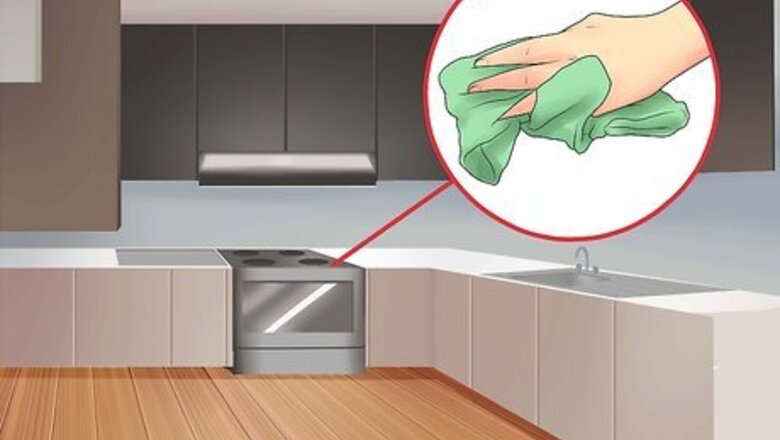
views
Maintaining a Safe Kitchen

Keep your kitchen clean. This will prevent kitchen injuries and give you the space to work when needed. Clean your stove and oven after use. Debris on burners or in the oven can catch fire, especially grease and fat. Wait until they have cooled, however; do not wipe a burner while it is still on or hot. Clean up spills. Liquids on the floor can cause you to slip and fall. If you can't clean it up right away, throw a towel onto the spot to remind you to get to it as soon as you can.
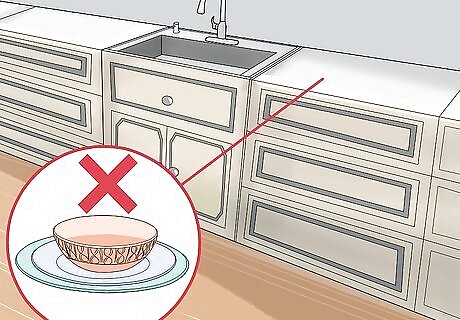
Keep counters clear of clutter. Put away dishes and utensils after you are done with them and they have been cleaned. You should always have enough room on your stove and counters to do what you need for cooking. Keeping your stove and counters clear will reduce the chances of things falling. This also includes other items, such as cook books, homework, and paper. Not only can they get dirty, but they can create a fire hazard if they are too close to the stove.
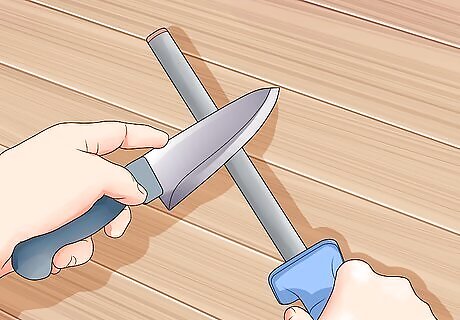
Sharpen your knives regularly. A dull knife may sound safer, but it is actually more likely to slip and slice you. To prevent this, you should always keep your cutting knives sharp with a sharpening stick or whetstone. How often you do this depends on how often you use your knives; the more often you use them, the more often you will have to sharpen them. Make sure the sharpener you use is meant for the blade material of your knife. Ceramic knives have different style sharpeners than other metal blades.
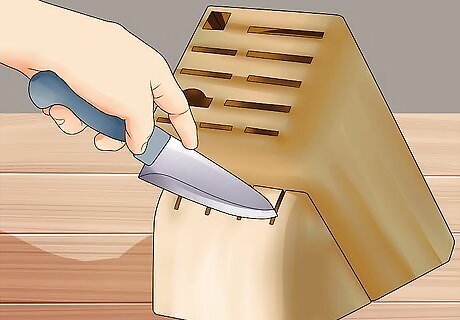
Store dangerous objects in a safe location. If you have children in the home, you need to designate a safe area for dangerous kitchen items. A knife block is safer for your children, and you, than storing them in a drawer. Make a habit of returning these items to their safe spot and never leave these items in reach of young children. Put heavy equipment on lower shelves. You don't want to worry about them falling down or breaking your shelves.
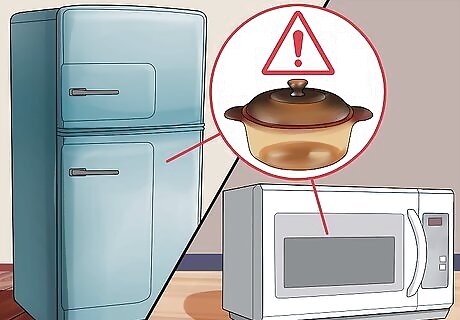
Keep your glass cookware safe. Don't move it between temperature extremes, such as from the freezer to the oven. Don't add liquid after the dish has gotten hot, and if it is cracked or chipped, you should throw it away. Clean up any broken glass immediately. Carefully sweep up the larger pieces, then vacuum to floor to pick up any finer pieces. You should also be careful with other breakable cookware, such as ceramic casserole dishes or china plates.
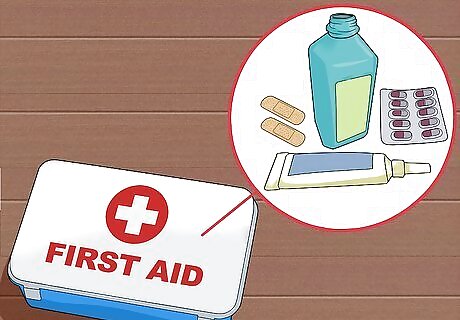
Keep a first aid kit handy. It should include band-aids, antibiotic ointment, alcohol or hydrogen peroxide, and aspirin. You never know when you might need it, and it's always better to be prepared. Have this item in an easy-to-reach area, such as a kitchen drawer or cabinet. You don't want to have to dig for this kit. If you have children, make sure that they know where to find the kit and how to use it.
Staying Safe While Cooking
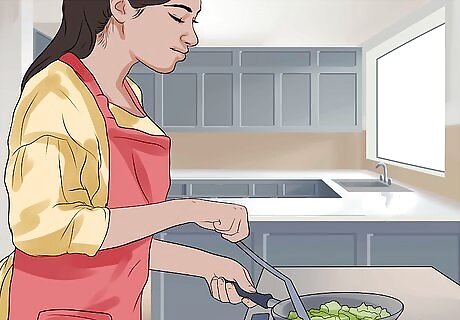
Stay in the kitchen. If you are frying, grilling, broiling, or doing anything else on your stove, you should always remain in the kitchen to keep an eye on things. You can multitask, as long as you stay in the kitchen. For example, if you are baking a cake, you can prepare the frosting while the cake bakes.
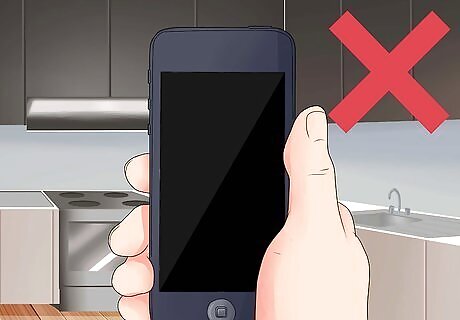
Avoid distractions. Don't try to do other things while you are cooking. Your attention should be completely on what you are trying to do, especially if it involves heat and sharp objects. Stay in the kitchen and off the phone. Using a timer can help, especially if you are worried something might distract you from your cooking. For example, if you are making icing while your cookies is in the oven, check on the cookies to make sure that they don't burn.
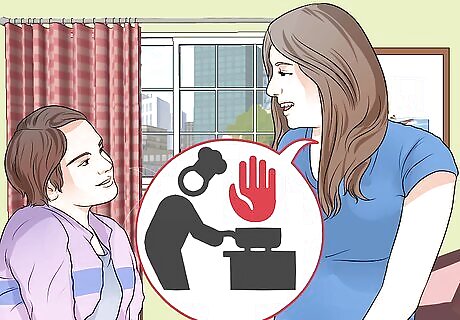
Establish kitchen rules if you have children. Set up some ground rules for when you are cooking to avoid accidents. You can either tell your children that they are not allowed in the kitchen when you are cooking or you can designate an area of the kitchen where children can be. Be consistent with your rules and your children will take you seriously. Change the rules as your children grow older and more responsible. For example, a toddler may get in the way while you're cooking, but a teen can help you out.
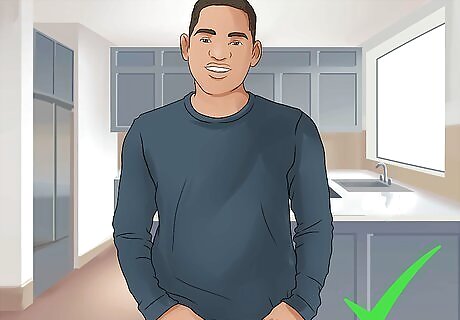
Wear proper clothing. This doesn't mean pads or a body suit, but making sure you limit exposed skin to prevent against splashing., and clothing like shirts, pants, and socks to protect the rest of you. Avoid loose sleeves or jewelry, which will get in the way. Some stores and online shops sell special sleeves that you can wear over your arms while frying food. Keep your hair pulled back. Not only is this more sanitary, but you also don't want your hair to get in the way as you cook.
Choose the right sized pot for the recipe. Most recipes will tell you what size pot you should use, so read them carefully. If you put too much food into a pot, it can overflow, creating both a mess and the potential for fire or spills. Handle large pots with care. They are heavy, so carry them with both hands. If you can't move it on your own, ask someone to help you.
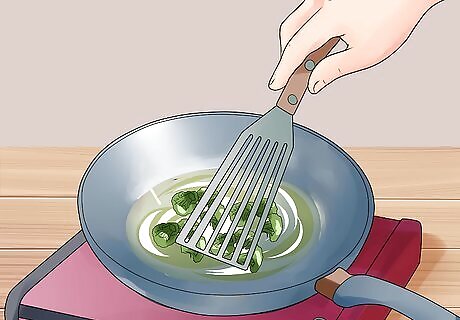
Use pots and pans with care. Turn the handles towards the middle of the stove when cooking. This will ensure that pots are not accidentally knocked off the stove or pulled down by a young child. Be sure to open hot pots away from your face, otherwise the escaping steam may burn you. If you have young children or nosey pets, you may even want to cook on the back burners whenever possible. Keep lids near to pots and pans in use. If you have a fire, turn the stove off and cover the fire with the lid. Don't use glass lids to put out fires, however, or they may break.
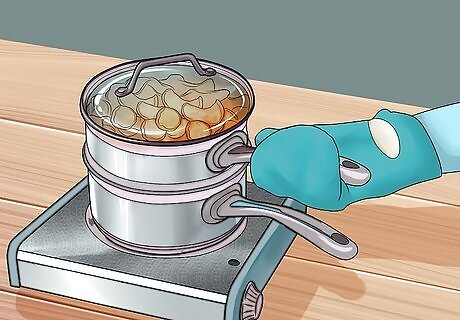
Use oven mitts. These should be proper mitts with insulation and not a dishrag. Mitts are a better choice than pot holders for carrying things because they give you better grip. You should always wear something over your hands to protect from burning when carrying hot pots or pans. Make sure your mitts are dry and still have their insulation before using. If they are wet or worn out, you can easily burn your hands. You should use mitts whenever taking something out of the oven. You should also use them if your pot or pan doesn't have an insulated handle, such as a cast-iron skillet.

Use a sieve or colander for straining. When pouring hot water out of a pot, using the top to hold in what you are cooking can release steam on your face and hands. This can cause burning, and make you drop the pot as well. Use a strainer for vegetables, pasta, and anything else that requires draining boiling water. If the pot is very heavy, use a colander to ensure that both of your hands are free. Set the colander into the sink, then use both hands to handle the pot.

Keep flammable objects away from the stove. This includes towels (both cloth and paper), potholders, food packaging, or anything else that might catch on fire. Some liquids may also be flammable, especially household cleaners. If the packaging tells you to keep the product away from heat, move it away from the stove.
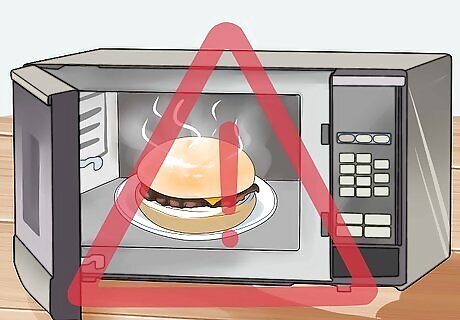
Be careful when using the microwave. Always let food cool for a minute or two after running the microwave, and be careful when tasting food, as microwaves can heat things unevenly, creating hot spots. Remove covering very carefully, as escaping steam can burn. Never put anything that is made from metal into a microwave. This includes dishes with metallic designs. Make sure that whatever you put into the microwave is heat-safe. Some plastics may melt, while some thin glass may shatter.
Designing a Safer Kitchen

Give yourself enough storage space. Clutter is dangerous in a kitchen, so you want to make sure there is enough room to store all of your cooking equipment when you aren't using it. If you don't have enough storage space, you may need to create more, or get rid of unnecessary items. Get creative with your storage. Make use of storage racks and holders that go on the inside of cabinet doors. If you have items you seldom use sitting on the counter, put them away into your pantry, garage, or cabinet.
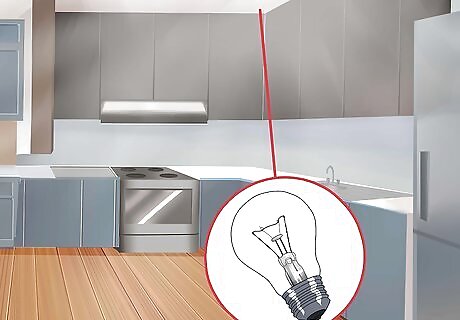
Get good lighting. A well-lit kitchen will help you to see what you are working with. It can also keep the area cheerful and welcoming. If possible, try to use both natural and artificial lighting; rely on natural light during the day and artificial light in the evening. Make sure your lighting fixtures don't produce glare or shadows.

Install a slip-resistant floor. Polished marble is very slippery, and can be dangerous. Instead, wood, rubber, cork, or slate are all better for a kitchen. You should also consider a non-slip mat, especially in front of the sink. Choose a material that is easy to keep clean, such as linoleum.
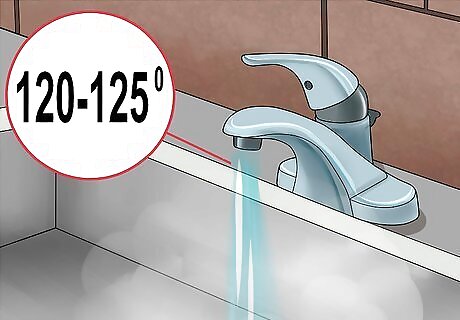
Regulate your water temperature. Make sure your water temperature is not set too high to avoid scalding and burns. A temperature between 120 and 125 °F (49 and 52 °C) should be high enough for what you need, but not too hot that you will get burned. You can also install anti-scald devices on your faucets to prevent the water from getting too hot. Consider getting a filter installed on your faucet. This won't affect the temperature, but it will make it safer to drink.
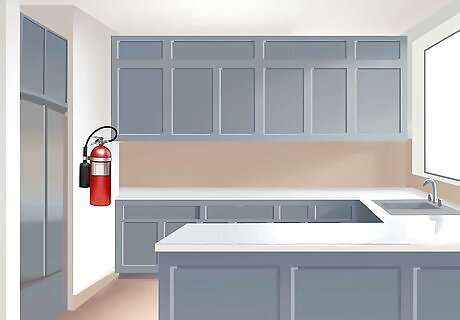
Have a fire extinguisher in the kitchen. Since many fires start in the kitchen, get a fire extinguisher. It should be stored somewhere away from stoves and ovens, as that will be where you will most likely need it. You don't want the flames to prevent you from getting to the extinguisher. Make sure you read the instructions when you buy the extinguisher. Don't wait until you have a fire in the kitchen before you read the instruction on how to use it. You can use baking soda to put out a small fire. A metal lid may also work.


















Comments
0 comment